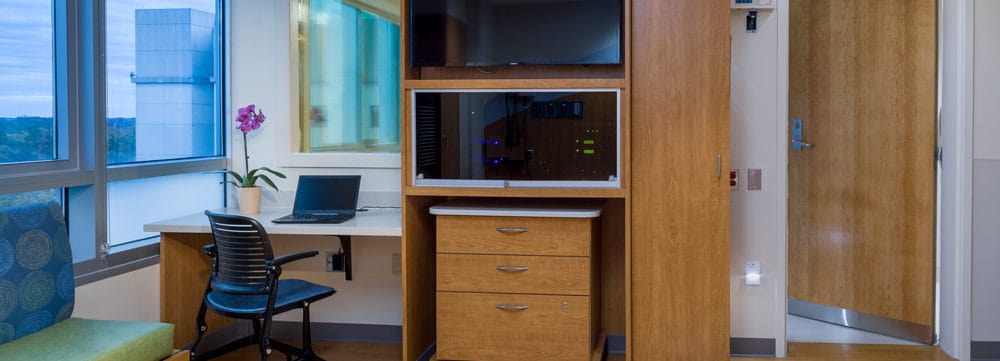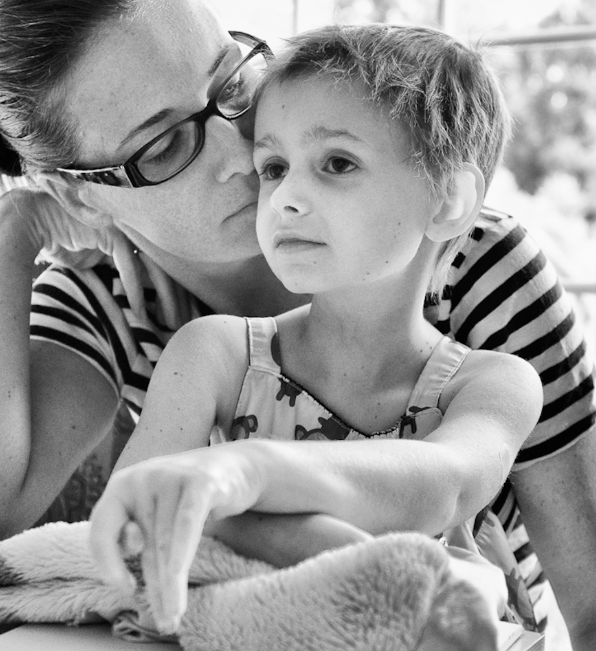Blog
Design That Answers the Call

The design shared here is truly inspired and provides the perfect example of how healthcare environments can support the journey of patients and their needs by offering a thoughtful design that answers the call.
The Santos Family
At the age of 2, Isabella Santos was diagnosed with neuroblastoma, a rare and deadly cancer that affects about 750 children a year. She endured five relapses with the disease before she passed away at age 7 in 2012.

Miss Isabella Santos and Her Mom, Missus Erin Santos
Young patients undergoing metaiodobenzylguanidine (MIBG) treatment face long periods of isolation because the treatment makes patients’ bodily fluids radioactive. Caregivers and parents can only spend five minutes per day in their room. Additionally, the treatment requires specialized rooms that need to be lined with 1 inch of lead brick shielding around all four walls and at the floor level.
To imagine Isabella, so young having to sustain such isolation is beyond what my heart can handle. But, it was the unfortunate reality for her and her parents. When Miss Isabella passed away, her family created the Isabella Santos Foundation and donated $1 million to Atrium Health Levine Children’s Hospital in Charlotte, N.C. The donation was meant to build the city’s first MIGB therapy suite. And they did!
Design Addresses Isolation
To address the isolation of the treatment as well as the need to provide constant patient monitoring, a lead-line window and door were added between two rooms, a parent suite and the patient room to visibly and physically connect the spaces. This design also allows access to the patient room by coming through the parent room.
The window you see in this photo, above the desk is comprised of six layers of 1/4-inch leaded glass. It allows the parent to maintain visual contact with the child when they cannot physically be in the room. Additionally, the rooms are connected by an audio/visual (AV) system, which allows caregivers to see, talk, and play games with the child.
The room at LCH also reflects Isabella. Her artwork graces the walls, and the ceiling features twinkling lights and a shooting star.
This type of specialized design was made possible by the generous donation of Miss Isabella Santos’s family. Not every facility has the budget or space to accommodate such a specialized design but for the families that are able to utilize this facility, a very difficult situation is eased, just a bit.
Marie Wikoff is the creator of Wikoff Design Studio based out of Reno, Nevada. Her expertise in healthcare design has helped modernize healthcare organizations locally, regionally, and internationally, improving patient experience and outcomes. Her credentials include Evidence-Based Design Accreditation and Certification (EDAC), American Academy of Healthcare Interior Designer (CHID), the National Council of Interior Design Qualification (NCIDQ) and LEED AP. Contact Marie Wikoff
Sources:
Wood, Rachel. “For Children with Cancer, Building a Room With a View to a Better Future.” Isabella Santos Foundation, Rachel Wood Https://Isabellasantosfoundation.org/Wp-Content/Uploads/2019/03/Logo.png, 3 July 2019, isabellasantosfoundation.org/for-children-with-cancer-building-a-room-with-a-view-to-a-better-future/.
DiNardo, Anne. “Making A Connection At Atrium Health Levine Children’s Hospital.” HCD Magazine, 31 July 2019, www.healthcaredesignmagazine.com/projects/pediatrics/making-a-connection-at-atrium-health-levine-childrens-hospital/#slide-1.







